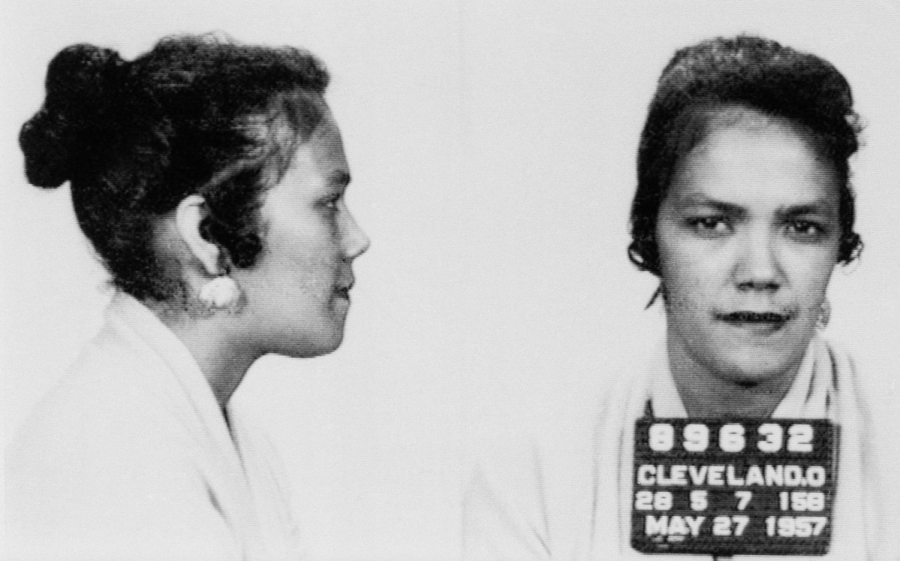The Missing Supreme Court Case from AP Gov’s Curriculum: Mapp v. Ohio
May 4, 2023
The AP U.S. Government and Politics curriculum includes 14 landmark Supreme Court cases that students are required to know for the exam. However, one crucial case involving the rights of the accused is missing.
A landmark case that should be added to the 14 required court cases list on the AP U.S. Government and Politics exam is Mapp v. Ohio (1961) because the precedent set in this case establishes that information obtained illegally cannot be used against a defendant in a criminal trial. This further protects individuals’ 6th amendment right to a fair and speedy trial by ensuring that the evidence used against a defendant was obtained correctly by law enforcement in compliance with the rule of law. The 4th amendment right of individuals is also protected by the precedent set in this case because it protects individuals from unlawful search and seizures.
The case originated in Cleveland, Ohio where police officers forcefully entered the home of Dollree Mapp without obtaining the proper search warrant. The police suspected Mapp was harboring a suspected bomber, but when they entered her home, no suspect was found. However, the police did find a trunk full of obscene pictures in her basement. She was then arrested for possessing the unlawful materials and convicted in an Ohio court. Mapp then argued that her 4th amendment right had been violated by the search, and appealed her case all the way to the Supreme Court in 1961. Mapp also argued that her freedom of expression was violated by being convicted of a crime for the possession of these obscene materials, but this argument was not as strong as her argument that her 4th and 6th amendment rights had been violated and was disregarded by the court.
The 6-3 decision in this case established the precedent that evidence collected in violation of the 4th amendment was inadmissible in state courts. Through this, it held that the exclusionary rule was also applicable to the states through the incorporation doctrine in which the aspects of the Bill of Rights are guaranteed for the states through the due process clause of the 14th amendment. Mapp v. Ohio overturned the precedent set in Wolf v. Colorado (1949) which originally recognized the right to privacy as “incorporated” but not a part of the federal exclusionary rule.
The Supreme Court reached a 6-3 decision on June 19th 1961 with the majority opinion written by Justice Tom C. Clark. The majority did not take into consideration the 1st amendment implications which Mapp argued, including her supposed implied right to freedom of expression, and based their decision off of the constitutionality of the 4th amendment and how the original decision in this case was unconstitutional. The court ruled that evidence obtained in violation of the 4th amendment was inadmissible in court due to the fact that it contradicted the constitution. This case also brought issues into the Supreme Court about how and when to apply the exclusionary rule due to the precedent set in their decision in Mapp v. Ohio.
The majority opinion was made up of Justices Warren, Black, Douglas, Clark, Brennan, and Stewart while Frankfurter, Harlan, and Whittaker dissented. Justice Clark wrote in the majority opinion; “This Court has not hesitated to enforce as strictly against the States as it does against the Federal government the rights of free speech and of a free press, the rights to notice and to a fair, public trial, including, as it does, the right not to be convicted by use of a coerced confession… Why should not that same rule apply to what is tantamount to coerced testimony by way of unconstitutional seizure of goods, papers, effects, documents, etc.?” This solidified the decision of the court and connected the decision to the constitution as well as other precedents set by the Supreme Court. Justice Clark also wrote; “nothing can destroy a government more quickly than its failure to observe its own laws.” This incorporated the rule of the law into the basis for the decision by clarifying why the 4th amendment applied to the state government in order to limit corruption. In the dissenting opinion, Harlan wrote, “which the Court has taken here is in the context of a case where the question was briefed not at all and argued only extremely tangentially.” In reference to the decision made by the majority of the court considering how close the margin of the decision was.
This case should be added to the list of the required court cases for the AP U.S. Government and Politics exam because of the significant impact it has had on criminal trials held at both the state and federal level following the precedent set. The decision in this case strengthened the constitutionality of the 4th amendment. This decision dramatically expanded the rights of criminal defendants which also strengthened the 6th amendment which grants defendants the right to a speedy and fair trial. Lastly, the precedent in Mapp v. Ohio helped to clarify how selective incorporation should be used through the due process clause of the 14th amendment. This case has 3 separate constitutional amendments with which it is considered which creates an obvious explanation as to why it should be a part of the curriculum in an AP Government course. While other cases already existing on the required court case list use the 4th, 6th, and 14th amendment as a part of the decision basis, no other case incorporates 3 separate amendments and not these specific three (within the list). Another argument could also be made to include the 1st amendment rights in the amendments associated with this case, but the 1st amendment was not utilized by the Supreme Court when deciding the case.
Mapp v Ohio is often a case that is forgotten due to the fact that it is not considered a monumental case and it is not a part of the AP U.S. Government and Politics required curriculum, but that does not mean it is not foundational to American society. This case strengthened the rights of criminal defendants and set a precedent that these rights should be upheld in future criminal trials at both the state and federal level. Without the precedent set in this case, the precedent of Wolf v Colorado would still be in place which would consequently compromise the rights of the accused and would not selectively incorporate these rights to the states. The 4th, 6th, and 14th amendments help to ensure the rights of American citizens under accusation of criminal offense, and while these citizens may have broken the law, the precedent set in Mapp v Ohio sets a precedent guaranteeing that their rights be protected because they are still citizens of America and deserve a fair trial, equality through their human rights, and protection from corruption.




























